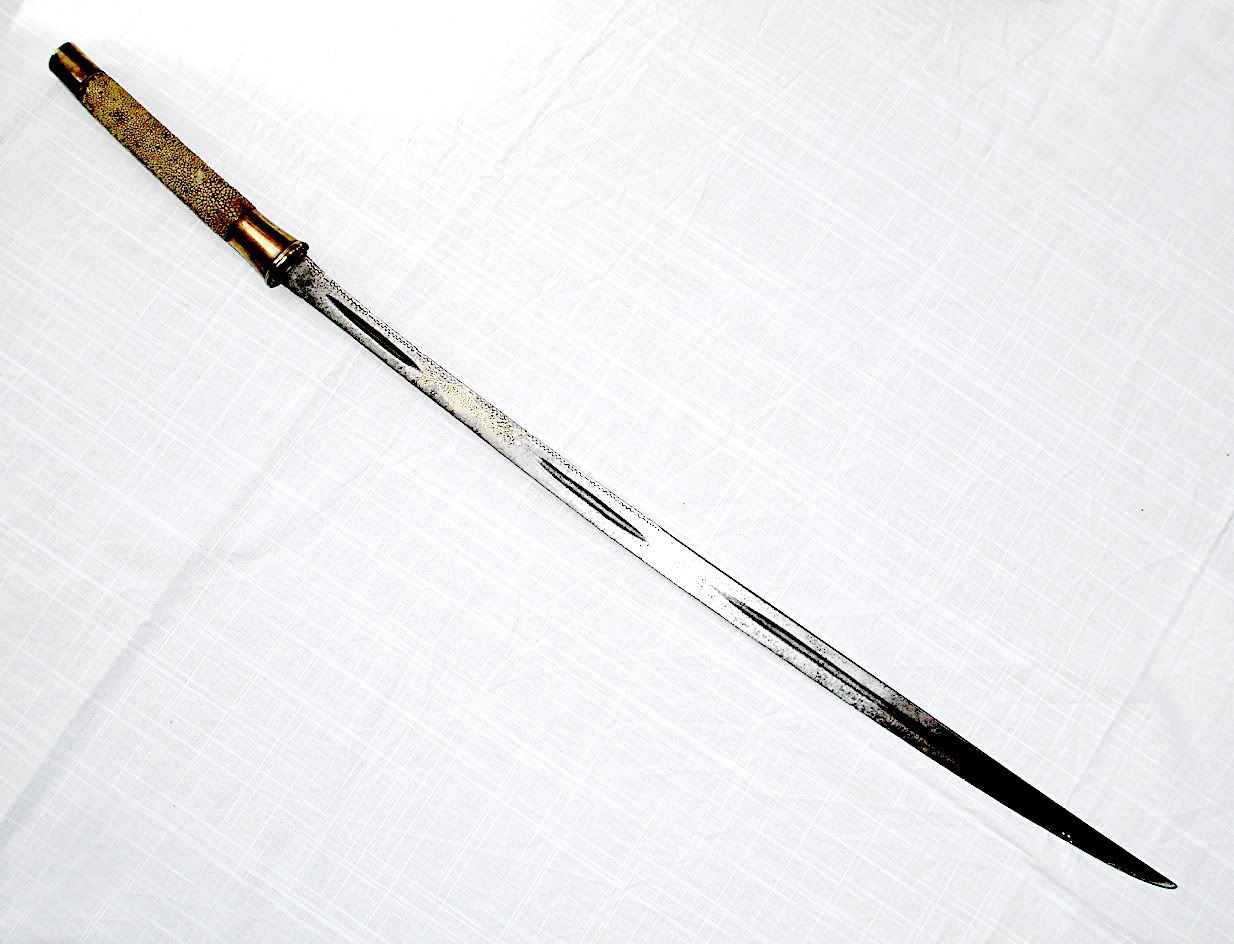( Let me know if I'm not allowed to do this )
This is from the gallery at Oriental Arms . The item was sold just last month.
It is again similar with the brass inlay , a rayskin grip and a rather narrow point . Like John's it has a single fuller on each side but the shape is straighter like my example. ( I wonder if the curvature on John's has increased looking at the convexity of the brass inserts in the spine ? )



Does anyone know generally ( in other cultures / other sword types ) whether the markings on the spine are simply just decoration or have a meaning of some kind. A relative of mine ( who is not a dha expert

) remembers from childhood that these notches related to use / kill / number of battles .
The writing on my item reads
Inga-Bettaw Maung Thein . Inga-Bettaw sounds like a place name and Maung Thein is a person ( sword smith ? ) .
The numbers read
15 with the
kyat symbol ( which looks like an
o on both sides ) The symbolism is now used to denote the post colonial currency but I think in previous times could have been exclusively a measure of weight or the number of layers :
kyat roughly translates as layer ( the term kyat is still used today as a measure as well as the currency ) .
The sword is very well balanced and has seen considerable use with several notches along the blade and some deeper cuts in the ferrule . The proximal third of the blade has been much sharpened and has lost some of its width as a result .
I questioned the age but was advised that it must be at least 1900 as it shares unusual stylistic similarities with a sword belonging to the Oldman collection.
It seems to be a genuine fighting dha rather than a presentation piece .
( John , Do you have a photo of the matching dha-hmyaung ? )

Another view